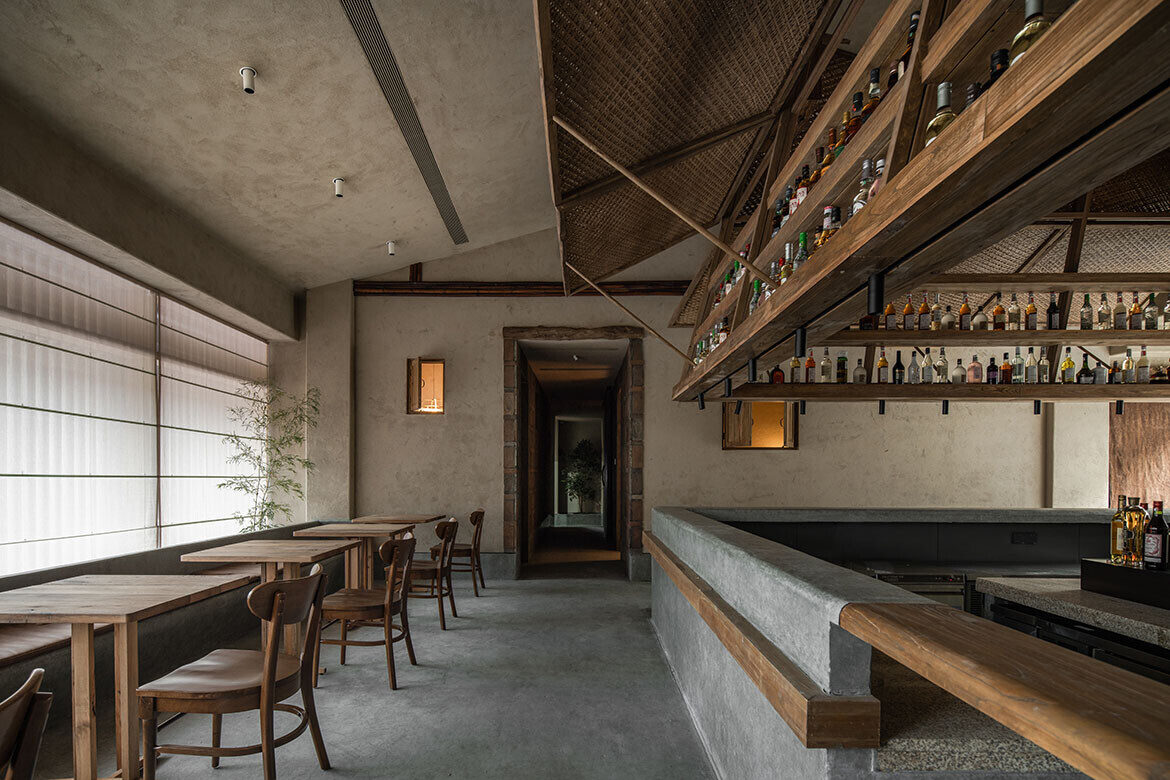Yuangu is a restaurant that sits above the street in Taikoo Li in Chengdu, Southwest China. Given that it was the very first restaurant in the region, there was immense significance to the project, which Wuzhi Design has executed in its refurbishment with care and respect. Taking a meticulous approach to the design process, many of the unique design features of this historic establishment are still apparent in its latest update.
The space is accessed by traversing a set of stairs where guests are greeted by historic features, like original old slate and wooden boards – exuding the charm and character of the history within a serene atmosphere.

The entrance is deliberately elongated and mystical, drawing people through a narrow hallway. Along this journey, the ambience shifts when it opens out to a bright and vibrant courtyard, which serves as the heart of the establishment.
The materiality further communicates a connection to nature by including bamboo, cement render, timber and stone. The combination calls back to the roots of simplicity and warmth that define Yuangu.


Another special element within the restaurant space that aligns with the desire to connect to nature is a dramatic water feature, illuminated from beneath, water trickles through a bamboo shoot. As a centrepiece of the restaurant, it adds a touch of serenity.
Yuangu is comprised of three main zones – dining and bar areas, the entrance and central courtyard, and the service areas including the kitchen and private dining rooms. The zones are delineated for their different uses and operate somewhat independently. However, each still has a close relationship with the central courtyard and there is an evolution of the design aesthetic that feels holistic and connected.


The kitchen is positioned in a back corner for practicality and efficiency. The bar has a more casual vibe where an overhead structure houses the alcohol, while one edge opens up fully to the courtyard. The main dining area has a mix of banquette and general seating.
When asked about the design inspiration for the restaurant, the designer stresses that form is simply the result of solving rational design problems such as space utilisation, energy efficiency, and lighting.
The simple, natural, and warm atmosphere of Yuangu is embodied in the design and speaks with great respect to the history of the building. Yuangu restaurant stands out as a testament to the power of design and the significance of preserving cultural heritage and natural beauty.
Project details
Architecture & interiors – WUZHI Design
Landscape designer – Yuxuan Yang
Photography – Chuan He (Here Space); Shuang Zhao (Wuzhi Design)
























